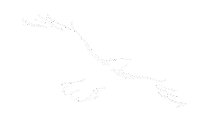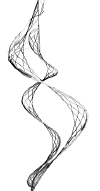How Indian Are You?
By Jeff Horwich - April
2001
Of the 12 races listed on the latest census form, only one has an official
membership card. That document, known as "the white card," is what makes an
Indian an Indian—at least in the eyes of many U.S. government and tribal
programs.
Not surprisingly, the use of the white card to record a human pedigree
raises civil rights concerns. The use of "blood quantum" to define a genetic
cut-off point for Indian people is viewed by many as an instrument of
assimilation or extermination. Yet over a century, blood quantum has become
a deeply ingrained—and even valued—tool in the relations between sovereign
tribes and the rest of world.
As a new generation of Indians comes of age, blood quantum reform may
be closely tied to the future of Indian nations and cultures.
A discussion on the implications of blood quantum at the American Indian
Center at St. Cloud State University.
COREY LAWRENCE IS A HALF-BLOOD SPEAR LAKE SIOUX. Lawrence, a junior at St.
Cloud State University, is an enrolled member of the North Dakota tribe
along with his father. But his mother is Ojibwe, and right now that means
Corey Lawrence's grandchildren will probably no longer make the cut at Spear
Lake.
"It's an iffy thing. I'm enrolled, but after my kids have kids that's it.
They can't be enrolled any more and the funding stops. And that's what I
think blood quantum was set up to do. In a way, it could be seen as
genocide," says Lawrence.
The vast majority of Indian tribes require one-quarter blood, specifically
from their reservation, for enrollment. One full-blooded grandparent, for
example, would give someone a blood-quantum of one- quarter.
Today, blood quantum data is dispersed among the records of 558
federally-recognize d tribes. But conventional wisdom holds that most
enrolled Indians, especially in the younger generation, have a blood quantum
of less than one-half. This is of some concern to groups like the Minnesota
Chippewa.
"It's against our spiritual beliefs to marry someone within your clan," says
Tom Andrus, who teaches Ojibwe history at St. Cloud State University. He
notes the irony that Minnesota's Ojibwe clans can maintain their bloodline
only by betraying their culture.
"Let's say I'm a quarter-blood from Fond du Lac, and I marry a quarter-blood
from Mille Lacs. Our children are no longer considered Indian by the federal
government, because they're not 25 percent from one nation," says Andrus.
And when you're not Indian enough, many tangible benefits stop. Generations
within families can be divided by tribal enrollment. And Indian communities
are torn between losing members through intermarriage, and the real or
perceived role of blood quantum in keeping the remaining cultures pure and
strong.
This is the enrollment certification form for the Mille Lacs band of Ojibwe,
which asks for the holder's blood quantum.
For this last reason, Andrus wouldn't do away with blood quantum. But he
foresees more talk of reform as today's quarter-blood young people reach
child-bearing age.
"I think that blood quantum is going to affect the basis of who we are, and
it's going to affect it in a major way, in the next 15 to 20 years," says
Andrus.
Blood quantum in the U.S. has been around longer than the country itself. In
perhaps the earliest example, a 1705 Virginia colony law defines 'mulatto'
to be anyone who was at least one-half Indian or one-eighth black. In
Minnesota, the first appearance of the blood quantum may be the Treaty of
1837, in which one clause makes provisions for the "half-breed relations" of
the Ojibwe.
The government came to adopt one-quarter blood quantum to distribute the
resources tribes secured in treaties across the country. On one level, it
was a bureaucratic necessity: Congress had to draw the line somewhere. The
more cynical view assumes that the government had an outcome in mind.
"I don't think anybody then would have dreamed that we'd have lasted this
long," says Andrus.
Indians are still around, and the blood quantum establishes the basis in
most cases for tribal enrollment. With recent expansion of tribal
sovereignty and innovation by reservation governments, being enrolled
arguably matters as much as it ever has.
The Indian Child Welfare Act protects the cultural rights of enrolled
children. Many Minnesota tribes will supplement state financial aid to meet
the cost of a college education for tribal members. Tribal health services
offer free or very affordable care for enrolled members. Some reservations,
like Mille Lacs, can essentially guarantee members a job. And in rare cases,
such as the Mystic Lake Casino owned and operated by the Mdewakaton Sioux,
cash payments from tribal enterprises can make tribal members millionaires.
The Quandary of Blood Quantum
While both enrolled and
non-enrolled Indians live on reservations, the much greater diversity within
urban Indian communities can raise unique blood quantum issues.
A tribe's right to
discriminate based on blood comes from its status as a sovereign nation. But
blood quantum distinctions can divide families in a way that's unique.
Kathy Lawrence, a nursing student at SCSU, is more than one-quarter Ojibwe,
but does not have enough Indian blood from either Red Lake or White Earth
for tribal membership. Her half-brother does, but she worries there would be
trouble if she joined him on family hunting trips.
"Up in Red Lake my brother hunts. They hunt and fish and snare rabbits, and
do it as a family thing, learning about the land. I can't do that. That
part's kind of hard because it's a family thing. I think that's the part I
miss the most," says Lawrence.
No tribe or government service is obligated to use blood quantum. The White
Earth Indian health center, administered by the U.S. Department of Health
and Human Services, avoids tough choices by giving free health care to
anyone who can show any relation to a recognized tribe.
"We want to take care of the whole family and extended family," says
director Jon McArthur. "It could be really disruptive if certain members of
the family were enrolled, and some were not enrolled. You could potentially
provide services to maybe the parents and not the children. We want to
provide services to all our people here," says McArthur.
The White Earth clinic can afford this practice for now. But tribes - and
many sympathetic non-enrolled Indians - worry that liberalizing enrollment
on a large scale could put a major financial strain on Indian programs faced
with increasing demand.
Some fear a cultural strain as well, if the blood quantum-based definition
of "Indian" were to change. The new census figures will do little to allay
such concerns. For the first time, the census allowed Americans to choose
more than one race, and the number of people checking "Indian" doubled
compared with 1990. It grew by 62 percent in Minnesota, to more than 81,000.
But tribal records show actual enrollment may be closer to half that number.
The interim director of the American Indian Center at St. Cloud State, a
descendent of the Choctaw nation, has light hair and blue eyes, and lacks
the blood quantum for enrollment. But Rex Veeder understands the desire to
protect the purity of tribal populations.
"Let's face it. Indian folks, rightfully so, are very nervous about people
coming into their community, saying they're Indian, and kind of taking over
stuff and appropriating the culture," says Veeder. "Personally, I like that.
I kind of like the idea that people in certain communties keep that circle
to themselves, and preserve their sovereignty and integrity as a people."
In coming years Minnesota tribes may look more closely to the Cherokee
Nation of Oklahoma, which extends membership to anyone who can trace an
ancestor to a 120-year-old membership list. The Cherokee add 1000 members
each month, and are now arguably the largest tribe in the nation. They are
also, perhaps, the most diluted.
The U.S. government decided more than 100 years ago that blood quantum was
what made an Indian. But to many of today's younger native people, at least,
it makes sense to look more than skin-deep -- at cultural values, religious
practice, and whether they intend to contribute to the reservation
community. Jenny Wharton, a 19-year-old freshman in St. Cloud, is Choctaw
and Comanche.
"I personally don't know what my quantum is. I know it's about four
generations back. But at the same time, I could be one one-hundredth, the
smallest percent, and I'd still consider myself an Indian, because it's
inside of me," says Wharton.
Perhaps it should come as no surprise that Minnesota's tribal elders are
already one step ahead. In a move designed to address the issue of dwindling
blood lines, the Minnesota Indian Council of Elders is asking state tribes
to recognize one another's blood quantum as equally valid. As tribes ponder
the proposal, another generation is coming of age.
Related Links:
Native American Heritage.com, a guide for Indian descendents
considering tracing their roots and possibly enrolling.
Blood Quantum: A Relic Of Racism And Termination, an essay on the
early history of blood quantum.
Challenge the Law of Genocide, an edition of American Comments web
magazine that features a strongly-worded argument against blood quantum.
All Things Cherokee, a guide to resources around the web related to
the Cherokee Nation.
A history of tribal enrollment from the American Indian Policy Center
(located in St. Paul)
Minnesota's Indian Reservations, with a page dedicated to information
on each.
Lyrics to the song Blood Quantum by the Indigo Girls.
Originally published here
White Eagle Soaring: Dream Dancer of the 7th Fire








 Get
a course to promote your business online, explode your sales
Get
a course to promote your business online, explode your sales Get
software to promote your business online in less time
Get
software to promote your business online in less time Get
software to streamline your business and run it hands free.
Get
software to streamline your business and run it hands free.